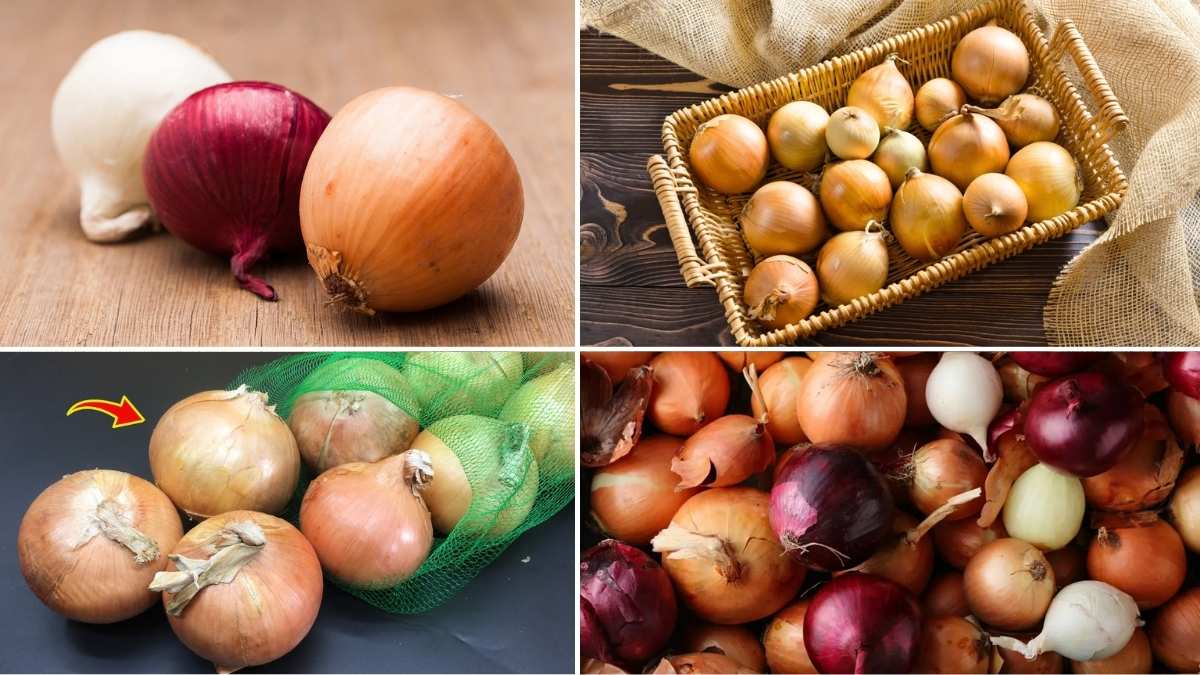Join on WhatsApp
Get the latest updates directly on WhatsApp – motivation, news & more!
Onions are a staple in almost every kitchen. Whether you’re preparing a hearty stew, sautéing vegetables, or adding raw slices to a sandwich, onions bring depth and flavor to a wide variety of dishes. But while they’re essential for cooking, they can also be a bit tricky to store. Improper storage leads to sprouting, softening, mold growth, or a strong, lingering smell that can affect other foods. Learning the best way to keep onions fresh and odor-free can not only extend their shelf life but also keep your kitchen more pleasant and organized.
Why Onions Spoil Quickly If Stored Incorrectly
Onions have a high moisture content and are sensitive to both temperature and humidity. When kept in a closed space or plastic bag without proper airflow, they tend to retain moisture. This encourages mold growth and spoilage. On the flip side, exposure to too much light or warmth can trigger sprouting. The ideal conditions for storing whole onions include cool, dark, and well-ventilated environments.
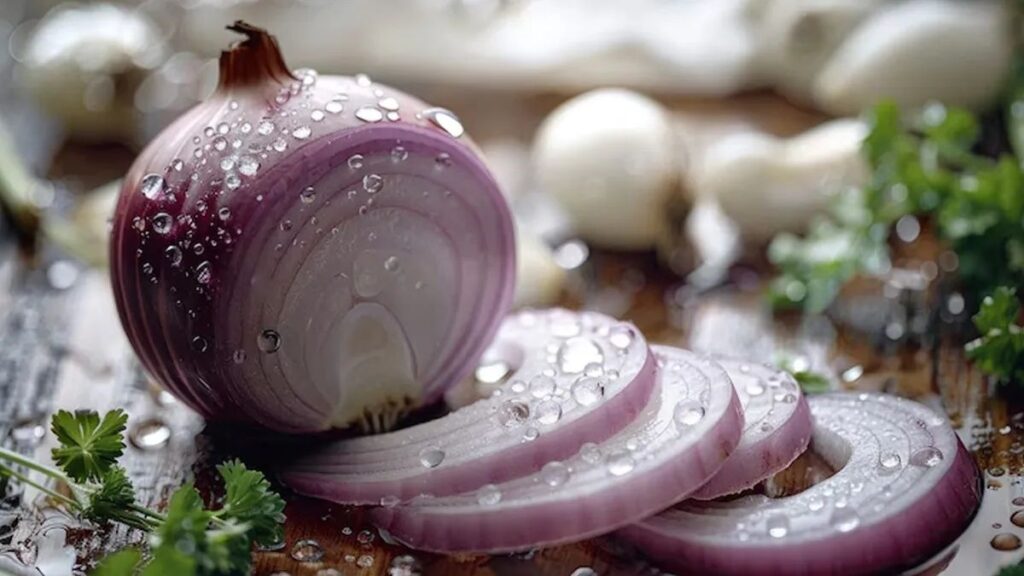
Storing onions near potatoes is another common mistake. Potatoes release moisture and gases that cause onions to spoil faster. Even a perfectly firm onion can begin to rot within days if kept in the wrong environment. The result is not just wasted produce but also the risk of that sharp onion odor spreading throughout your pantry or refrigerator.
Best Storage Conditions for Whole Onions
To keep whole onions fresh for as long as possible, they should be stored in a place that is dry, dark, and well-ventilated. Pantries, basements, or kitchen cabinets that do not trap humidity are ideal. Instead of using plastic bags, which trap moisture, opt for mesh bags, open baskets, or even paper bags with holes punched into them. These allow the onions to breathe, which slows down decay and prevents odor buildup.
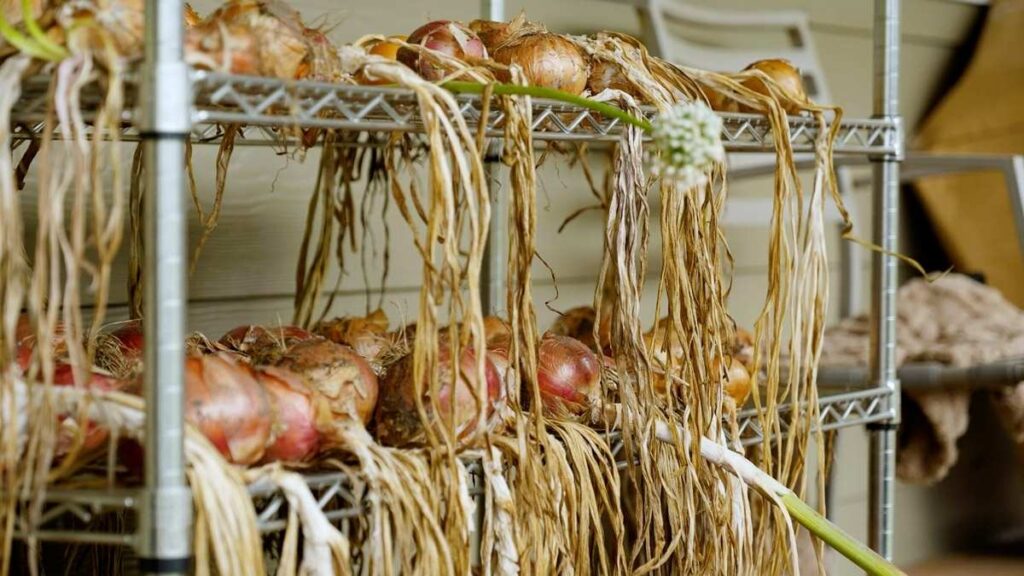
Temperature also matters. Whole onions keep best in an environment that is between 45 and 55 degrees Fahrenheit (about 7 to 13 degrees Celsius). Too much cold, like the conditions inside a refrigerator, can cause them to become soft or rubbery. Too much warmth speeds up spoilage. If you have a cellar or cool storage room, that’s the perfect place to keep a stash of onions fresh for several weeks or even months.
Storing Cut or Peeled Onions Safely
Once an onion has been cut, the storage method changes significantly. Cut or peeled onions should always be refrigerated. To keep them from absorbing odors or spreading their own, place them in an airtight container or seal them tightly in reusable food wraps. Glass containers work particularly well because they do not hold odors like plastic does.
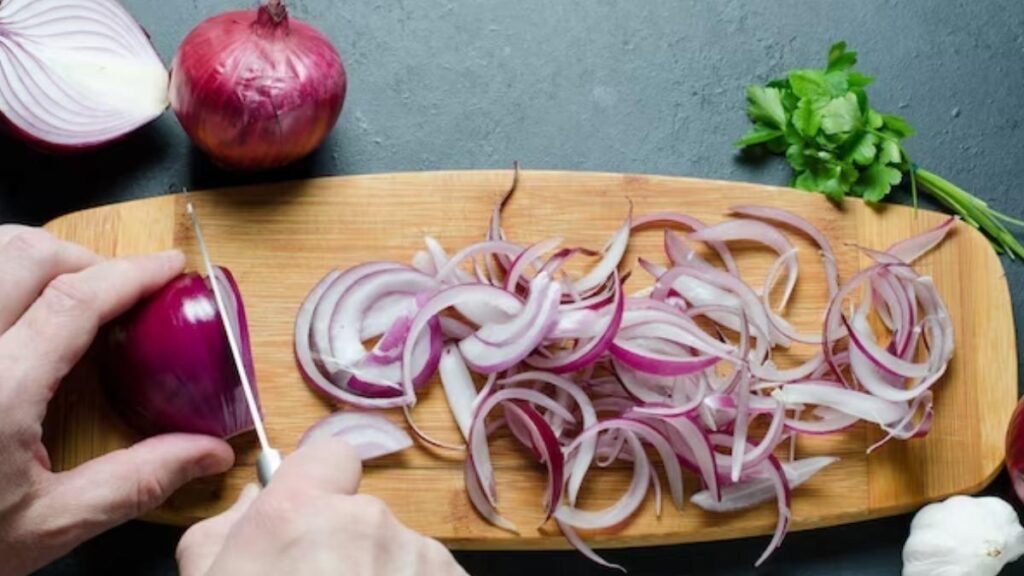
Cut onions typically last up to 7 to 10 days in the refrigerator when stored properly. It’s best to use them as soon as possible for maximum freshness and flavor. Leaving a cut onion exposed to open air will cause it to dry out, absorb fridge odors, or become slimy due to its natural sugars reacting with moisture.
Freezing cut onions is another option if you don’t plan to use them right away. Dice the onions, spread them on a baking sheet to freeze individually, then transfer to a freezer-safe container or bag. While frozen onions lose their crisp texture, they are still perfect for cooking and add flavor to soups, stews, and sautés.
Natural Ways to Minimize Onion Odor
One of the biggest challenges with storing onions is managing their strong smell. If left uncovered or stored improperly, the sulfur compounds in onions can quickly dominate your kitchen or refrigerator. There are several natural methods to minimize or eliminate these odors.
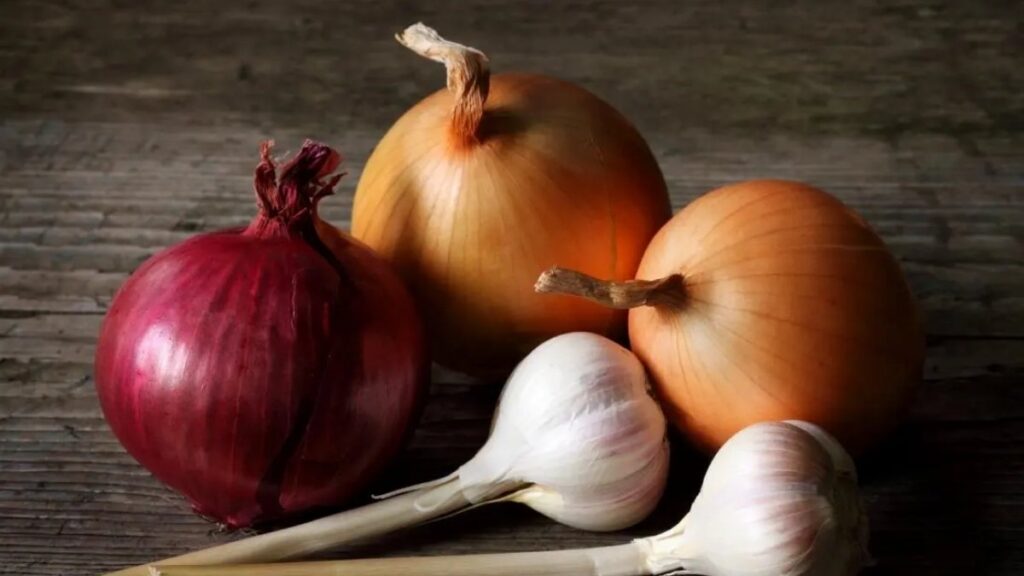
Charcoal, baking soda, or even coffee grounds can absorb odors when placed nearby. These should not be in direct contact with the onions but placed in an open container within the same storage area. In the refrigerator, placing a small bowl of baking soda near the onion container helps neutralize smells and keeps the fridge smelling fresh.
Using airtight containers is one of the most effective ways to prevent onion odor from spreading. Glass containers with silicone lids or vacuum-sealed options trap both moisture and smell. Some people also wrap sliced onions in paper towels before placing them in containers, which helps absorb excess moisture and further reduces odor.
Best Onion Storage Practices for the Long Term
If you buy onions in bulk or grow them in your garden, storing them for long-term use requires a bit more attention. First, cure the onions by allowing them to dry in a well-ventilated space out of direct sunlight for up to two weeks. Once the outer layers become papery and the necks are dry, they are ready for storage.
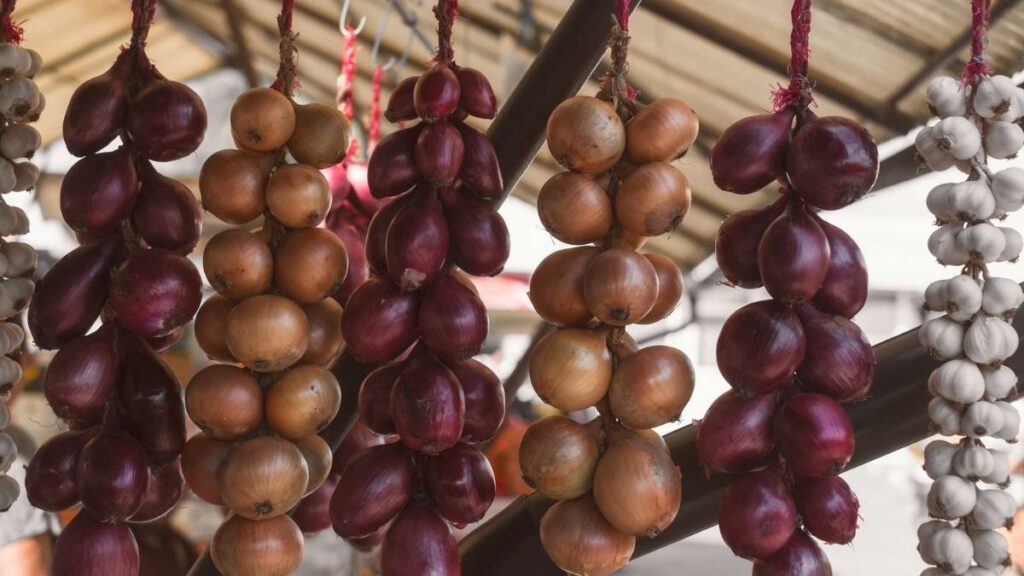
Keep these cured onions in a breathable container like a mesh bag or woven basket. Avoid plastic tubs, which restrict airflow. Store them in a cool, dry area where the temperature remains stable. Periodically check for any soft or sprouting onions and remove them immediately to prevent the spread of spoilage.
Some people braid the onion stems and hang them in bunches from cellar rafters or pantry hooks. This not only looks rustic and decorative but also allows air to circulate freely around each bulb, further extending freshness.
How Different Types of Onions Affect Storage
Not all onions store the same way. Yellow onions tend to have a thicker skin and lower moisture content, making them ideal for long-term storage. White onions are milder and higher in water, so they have a shorter shelf life. Red onions fall somewhere in between but can still last several weeks under the right conditions.
Sweet onions, like Vidalias, are among the most perishable. Their high sugar and moisture content make them prone to mold and softening. These should be used within a week or two of purchase and stored in the refrigerator once cut. Understanding the variety of onion you’re working with can help determine the best storage strategy and prevent premature spoilage.
Avoiding Common Mistakes When Storing Onions
Many people unintentionally reduce the shelf life of onions by making small but impactful storage mistakes. One of the most common is storing onions in sealed plastic bags. This traps moisture and encourages mold. Another mistake is storing onions near moisture-producing produce like potatoes, which accelerates spoilage. Even placing onions in a damp area of the kitchen can shorten their life.
Another issue is keeping onions in clear containers or under direct light, which causes them to sprout. Instead, use opaque containers or store onions in dark spaces to keep them dormant for longer. Finally, always separate spoiled onions from healthy ones. Just like fruit, one bad onion can spoil the rest.
Final Thoughts
Keeping onions fresh and odor-free doesn’t require expensive gadgets or complicated methods. With a little knowledge about their preferred environment and proper storage techniques, you can make your onions last longer, maintain their flavor, and keep your kitchen smelling clean. Whether you’re storing whole bulbs in the pantry or saving a leftover half in the fridge, paying attention to airflow, temperature, and containment makes all the difference.
Onions are one of the most versatile ingredients in cooking, and when stored correctly, they can always be within reach when you need to elevate a dish. By making a few simple adjustments in how you store them, you’ll reduce waste, save money, and ensure that your onions are always ready to enhance your next meal.

